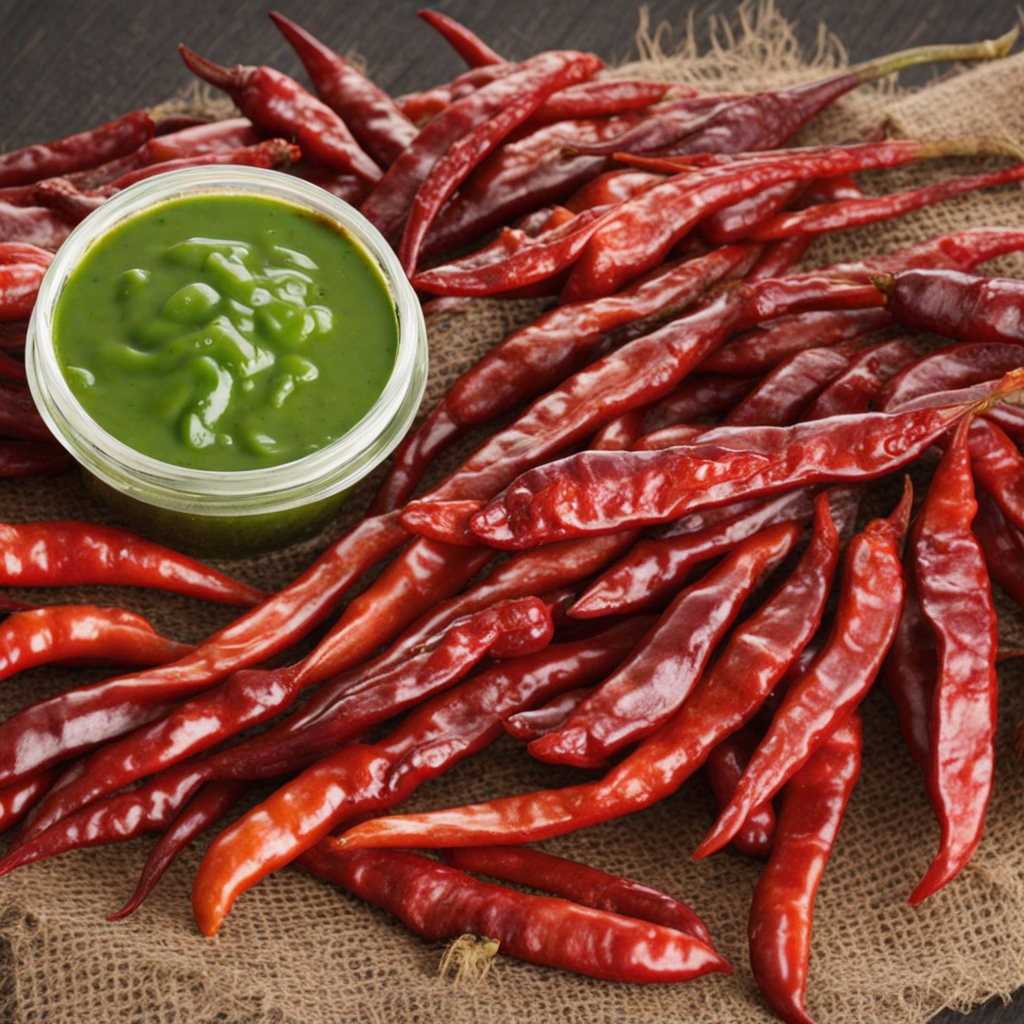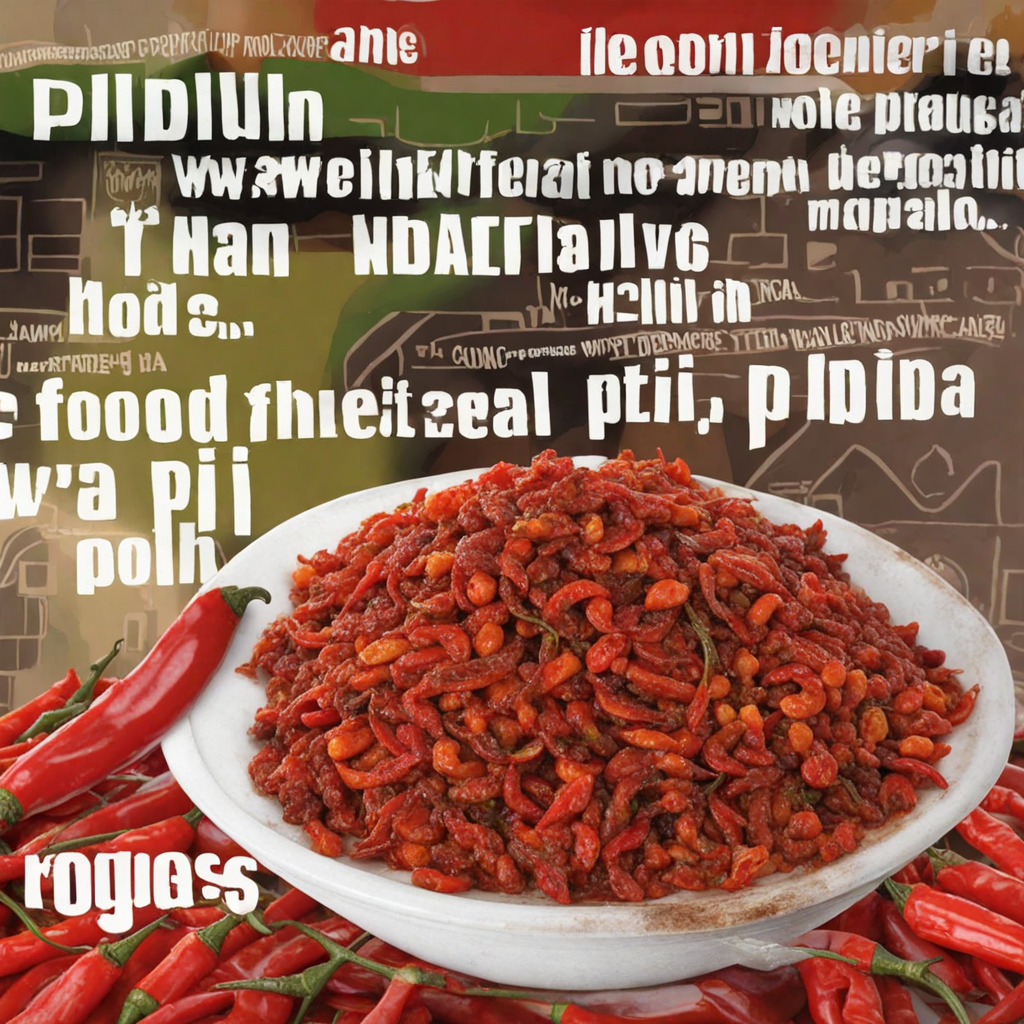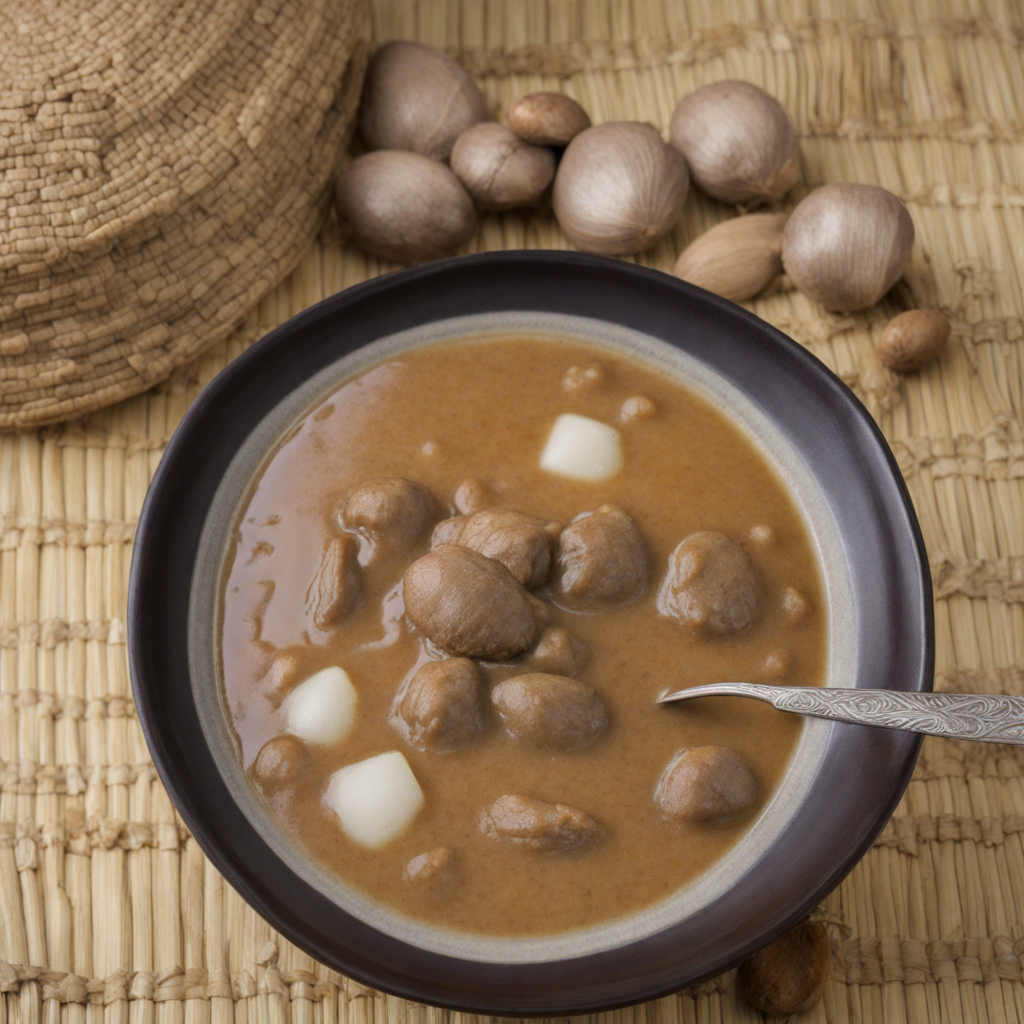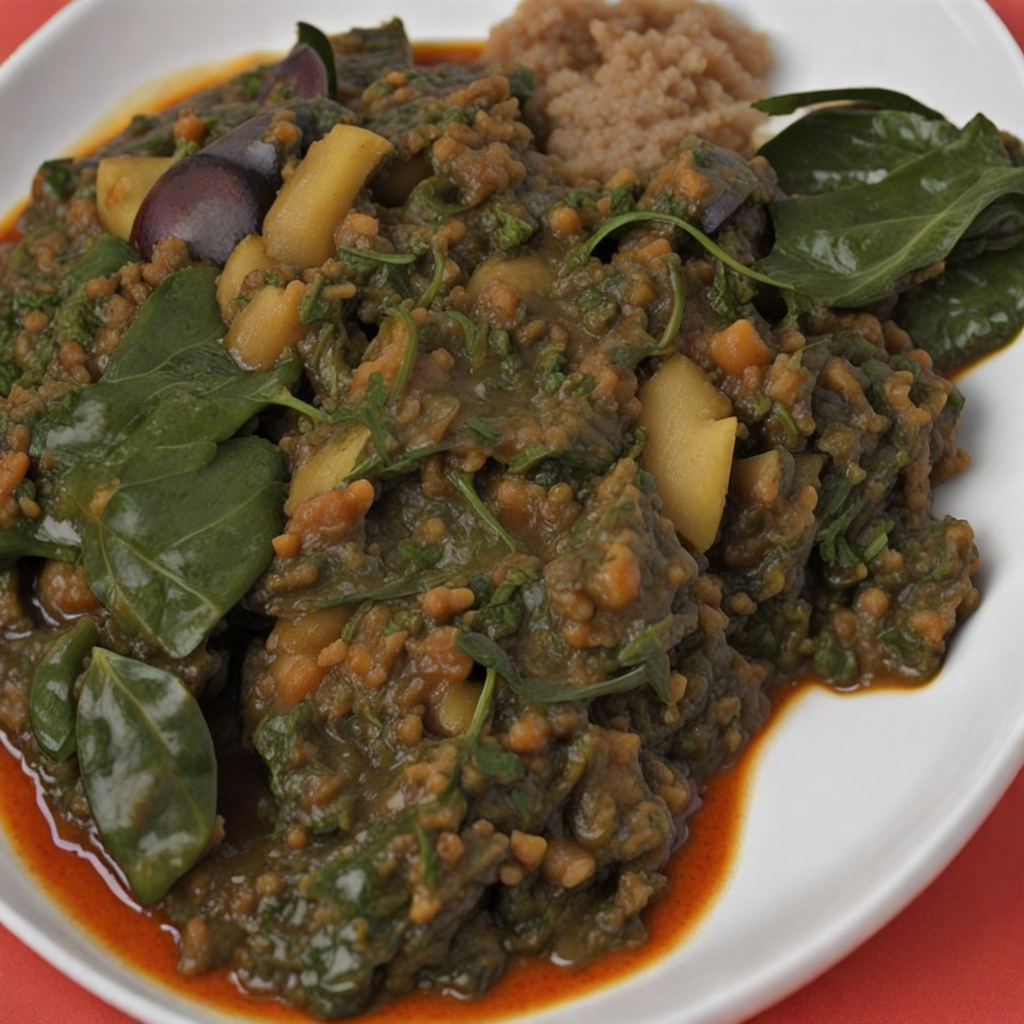Pili Pili
Pili Pili, a vibrant and fiery condiment from the Democratic Republic of the Congo, is a must-try for anyone seeking to explore bold flavors. This spicy sauce is primarily made from fresh chili peppers, which give it its intense heat and distinctive character. Often blended with garlic, onions, and various spices, Pili Pili can be adjusted to suit personal taste preferences, ranging from mildly spicy to extremely hot. Its bright red or green color adds a visual appeal that complements a wide variety of dishes, making it a versatile addition to any meal. The flavor profile of Pili Pili is complex and layered, offering not just heat but also a delightful depth of flavor. The freshness of the ingredients shines through, with the pungent garlic and aromatic spices harmonizing perfectly with the heat of the chilies. It is commonly used as a dipping sauce for grilled meats, fish, and even vegetables, infusing each bite with an exhilarating kick. Additionally, it can be drizzled over stews or soups to elevate the overall taste, providing a tantalizing contrast to richer, more savory dishes. Beyond its delicious taste, Pili Pili holds cultural significance in Congolese cuisine, often enjoyed during communal meals and celebrations. It embodies the spirit of sharing and hospitality, as it is frequently passed around the table for everyone to customize their dishes. For those adventurous eaters and culinary explorers, Pili Pili offers not just a new flavor but also a glimpse into the rich culinary traditions of the Democratic Republic of the Congo, inviting you to savor the warmth and passion that goes into every drop of this beloved condiment.
How It Became This Dish
The History of Pili Pili in the Democratic Republic of the Congo Pili Pili, a term that evokes both heat and flavor, is a beloved staple in the culinary landscape of the Democratic Republic of the Congo (DRC). This fiery condiment, typically made from chili peppers, has deep roots in the region's history and culture, reflecting the complexities of its people, their traditions, and their interactions with the environment. To understand Pili Pili fully, one must explore its origins, cultural significance, and evolution over time. #### Origins: A Spicy Beginning The history of Pili Pili can be traced back to the introduction of chili peppers to Africa, which occurred after the Columbian Exchange in the late 15th and early 16th centuries. Originally native to the Americas, chili peppers made their way to Africa through trade routes established by European colonizers. By the time they reached the DRC, local communities had begun to adopt and adapt this new ingredient, incorporating it into their culinary practices. The term "Pili Pili" itself is derived from the Swahili word "pilipili," which means "pepper." In the DRC, various types of chili peppers are used to create this spicy condiment, with the most common being the African bird's eye chili. These small, potent peppers thrive in the humid, tropical climate of the DRC, making them a natural choice for local farmers. #### Cultural Significance: A Flavorful Tradition Pili Pili is more than just a condiment; it is an integral part of Congolese identity and culture. The DRC is home to a rich tapestry of ethnic groups, each with its own culinary traditions. Pili Pili transcends these cultural boundaries, serving as a unifying element in the diverse Congolese cuisine. It is typically used to enhance the flavor of various dishes, from grilled meats and fish to stews and vegetables. The condiment is often served alongside meals, allowing diners to customize the heat level to their liking. In many Congolese households, the preparation of Pili Pili is a communal activity. Families gather to make the sauce, combining fresh chili peppers with ingredients like garlic, onions, and vinegar, which not only add flavor but also help preserve the sauce. This process fosters social bonds and reinforces the importance of food in family and community life. Pili Pili also holds symbolic significance in Congolese culture. It is often associated with hospitality, as serving a spicy dish can be seen as a gesture of warmth and generosity. The level of spiciness can even reflect the host's desire to impress their guests, showcasing both culinary skill and cultural pride. #### Development Over Time: From Tradition to Global Influence As the DRC navigated the challenges of colonialism and post-colonial identity, the role of Pili Pili evolved. During the colonial period, the introduction of new agricultural practices and trade routes influenced the cultivation of chili peppers and the production of Pili Pili. While traditional methods of preparation remained, colonial powers also introduced industrial techniques, leading to the commercialization of the condiment. In the late 20th century, as the DRC faced political upheaval and economic challenges, Pili Pili gained further prominence. The rise of street food culture in urban areas saw Pili Pili being served in small shops and markets, often paired with grilled meats, fried plantains, and other local favorites. This accessibility helped to solidify its status as a national dish, enjoyed by people from all walks of life. As globalization took hold in the 21st century, Pili Pili began to make its way beyond the borders of the DRC. The growing interest in African cuisine among international food enthusiasts led to the inclusion of Pili Pili in global culinary discussions. Chefs and home cooks alike started to experiment with the condiment, incorporating it into fusion dishes and elevating its profile on the world stage. Today, Pili Pili is not just a staple in Congolese homes; it is also a symbol of resilience and cultural pride. Various brands and artisanal producers have emerged, offering bottled versions of the sauce that cater to both local and international markets. These products often highlight the unique flavors of the DRC, showcasing the diversity of chili peppers and traditional preparation methods. #### The Future of Pili Pili As the DRC continues to evolve, so too does the future of Pili Pili. The global demand for authentic, flavorful condiments presents both opportunities and challenges for local producers. While the commercialization of Pili Pili can lead to greater recognition of Congolese cuisine, it also raises concerns about sustainability, biodiversity, and the preservation of traditional practices. Efforts to promote local agriculture and support small-scale farmers are crucial in ensuring that the production of Pili Pili remains tied to its cultural roots. Initiatives that focus on sustainable farming practices can help protect the unique varieties of chili peppers that thrive in the DRC, preserving the flavors that define this beloved condiment. Moreover, as culinary tourism grows in popularity, Pili Pili has the potential to become a culinary ambassador for the DRC. Food enthusiasts traveling to the region can engage with local producers, learn about traditional preparation methods, and experience the vibrant flavors of Congolese cuisine firsthand. This exchange fosters cultural appreciation and helps to cement Pili Pili's place in the global culinary narrative. #### Conclusion: A Legacy of Heat and Flavor Pili Pili is more than just a spicy condiment; it is a reflection of the Democratic Republic of the Congo's rich history, diverse cultures, and resilient spirit. From its origins in the Columbian Exchange to its status as a beloved staple in both local and international cuisine, Pili Pili embodies the complexities of Congolese identity. As it continues to evolve, this fiery condiment serves as a reminder of the power of food to connect people, celebrate traditions, and bridge cultural divides. The legacy of Pili Pili is one of heat, flavor, and the enduring bonds that unite communities through the shared experience of food.
You may like
Discover local flavors from Democratic Republic Of The Congo







